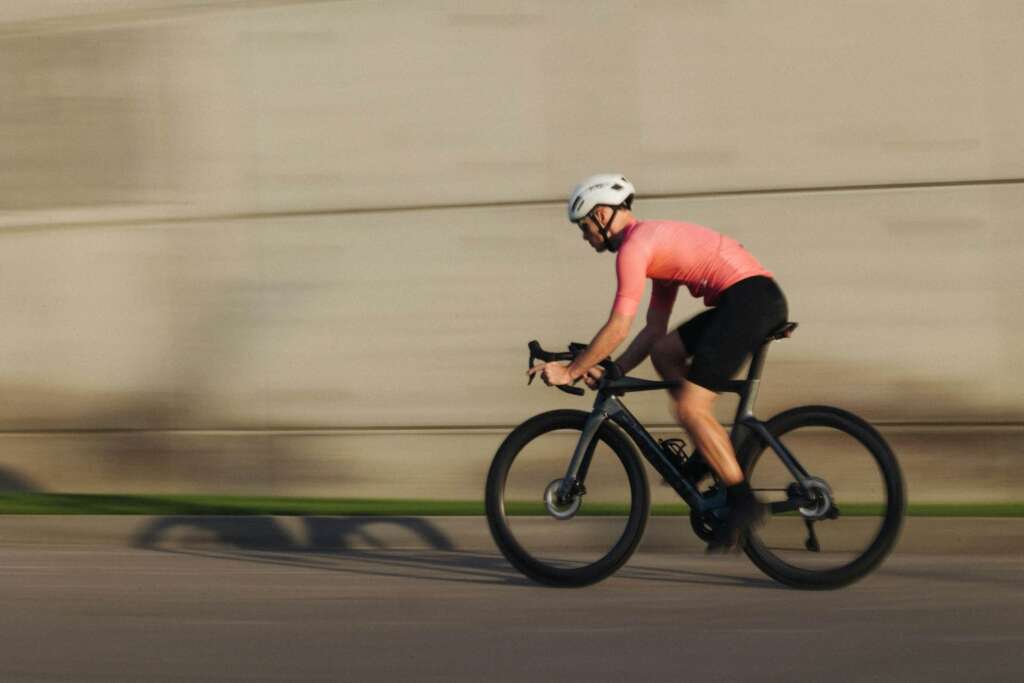Cycling is great for your fitness and your mental health, but an ill-fitting saddle or an unbalanced bike set-up could lead to genital and reproductive health problems. For male cyclists, a bad choice of saddle can pile huge pressure on the perineum — the delicate area between the genitals and the anus – which can compress nerves and disrupt blood flow, causing genital numbness and erectile dysfunction. Female cyclists can also suffer from numbness, nerve compression, saddle sores, swelling and bruising.
Sexual health issues remain a taboo subject in the cycling community, with many elite and recreational riders suffering in silence. But research suggests one in five male endurance cyclists experience penile numbness, with 13% developing temporary erectile dysfunction. And one study in the Journal of Sexual Medicine found that 52% of female cyclists suffer from some form of sexual dysfunction, such as genital numbness.
Compelling research suggests that cycling is not, in itself, the problem here. A large multi-national study in the Journal of Urology found that male cyclists have no worse sexual function than swimmers or runners. And another multi-national study in the Journal of Sexual Medicine found that female riders are also no more likely to report sexual dysfunction than swimmers or runners.
Dig a little deeper into the evidence and you will find some very specific triggers behind these issues, which are usually related to bike fit. For example, a study in European Urology found that narrow seats or seats with a V-shape decrease oxygen to the penis by 82.4% and 72.4% respectively.
Phil Burt, an experienced cycling health expert, who spent over a decade as Head of Physiotherapy at British Cycling, and five years as Consultant Physiotherapist for Team Sky (now Ineos Grenadiers), has led the fightback against these unwelcome sexual health issues.
Through his work with elite and amateur riders, Burt has learned that every rider is unique, but certain issues, such as a poor saddle choice, are often the cause of these problems. Burt has released a book, called Bike Fit, to help amateur riders set up their bikes for optimal comfort and performance. And at his Phil Burt Innovation clinic, he addresses these long-neglected issues every day. Here Burt discusses cycling’s big sexual health taboo – and how you can avoid any unwanted problems.

What kind of genital or reproductive health issues can male cyclists suffer from?
Male cyclists can get penile numbness, erectile dysfunction, and also prostatitis – a nasty condition where the prostate becomes inflamed. Men can get saddle sores and other things too, but those are the main things. Most of these conditions occur because of pressure on the pudendal nerve, which serves the penis. And that is why ‘gap’ saddles (which feature a cut-out section to relieve pressure) were invented. That sustained pressure from being in the saddle for hours can expose riders to extreme loading if the saddle isn’t in the right place. You can get neuropraxia, which is when the nerves switch off. Nerves are very sensitive things if you annoy them, but normally they recover when things are corrected.
What are the common genital or reproductive health issues suffered by female cyclists?
It is helpful to delineate between genital health and reproductive health. Women have disproportionately more genital health issues, such as saddle sores. It remains a taboo subject. A lot of women don’t talk about it, but it causes a lot of distress. As men and women have different genitalia, the soft tissue make-up is different, so a gap saddle might work for one woman but not for another. And if the saddle is in the wrong place, it can cause irritation. Women generally have wider pelvises, so they are often more susceptible to saddle issues. We do a lot of saddle pressure studies, and women often have to rotate forward at the pelvis, which places pressure on the front of the saddle. When you have water, heat, pressure and friction, skin is under a hell of a lot of pressure too, and that is exactly what you get on a saddle. So you can get breaks in the skin which get infected, or other forms of pain, dysfunction or bruising.
If people are fidgeting on the saddle, often it is because they are on the wrong width saddle, so they push backwards all the time. What they need is more support
Phil Burt
Is a better-fitting saddle often the simple solution?
With numbness issues, we have great success in putting people on a saddle with a central relief channel. And if you get that saddle in the right place, through a good set-up, that can be a magic bullet. With prostatitis, it is not often that cycling causes that issue, but it can irritate it. Sometimes men need antibiotics or anti-inflammatories, but keeping the pressure off the prostate will help with the recovery.
Does the position of the saddle also affect a rider’s genital health?
We have the world’s only dedicated saddle health clinic, so we know that genital and reproductive issues are not always about the saddle. We often see people walk in with a bag of ten saddles and they don’t know which one works for them. But unless a saddle is in the right place – in terms of its height, setback [how far back or forward it is], orientation or tilt – then a great saddle can still cause numbness. So we start by assessing your position. If we can’t adjust you, we can adjust the bike. We look at sit-back distance and that is usually a magic moment too. If people are fidgeting on the saddle, often it is because they are on the wrong width saddle, so they push backwards all the time. What they need is more support, usually through a wider saddle.
How does the shape of a saddle affect genital health issues?
Some people use the wrong type of saddle. For example, they try to use a saddle which is very good for time trials, but which is not designed for longer road rides. During time trials, a rider’s pelvis will often rotate further forward, but if they are adopting a more upright position during an endurance ride they need more support. Saddle choice is a minefield. But generally it comes down to two categories – T-shape and V-shape. T-shape saddles tend to be more suited to people in more upright positions on endurance rides. V-shape saddles tilt a rider forward for more aggressive road positions. What works for one person will not work for another and that is why we have a clinic.
The trend over the last 10 years has been towards short-nose saddles, as they tend to offer support where it is needed, but they get out of the way in places we don’t want the saddle to be. They also reduce the variability of where to sit on the saddle, which can help. With a longer saddle, you can sit in lots of different places, and you need to know where is best. But with a short-nose saddle, you stay seated in the right place – provided you are set up correctly. So they are often easier for everyday cyclists.
All human beings are asymmetrical, but bikes are symmetrical. So if you have one leg that is longer than the other, that will change your saddle pressure too
Phil Burt
Is the angle of the saddle also crucial?
One top tip is that I don’t know of any saddle that should be used nose-up. Your saddle should be horizontal or slightly nose-down. I went to the UCI (the international cycling governing body) and got the saddle tilt rules changed. There used to be a rule that it could not be tilted more than 2° down. But tilting the saddle down slightly allows the pelvis to rotate to where it wants to be, leading to a massive drop in frontal pressure when seen through our pressure mapping analysis. But if it is tilted too far forwards, you will fall forwards slightly.
How does a rider’s general bike set-up influence these issues?
It is multifactorial. For example, somebody might come in with the right saddle, but they are bouncing around the bike. And that is what is causing the saddle pain or dysfunction. It may be because they are using massively too long crank lengths, so as the crank comes to the top of the rotation they have to rock over it and rock back down. So it is not always about the saddle.
What technology do you use to help riders who have these problems?
We have a motion capture system, called RETUL, which gives us objective data about different joint angles, the measurements of the bike, and the saddle tilt and setback. And we use Gebiomized – a saddle pressure system which was made for horses first of all, in order to position their saddles correctly. All that data is helpful. But we don’t fit to numbers. The numbers just support the working rationale. I use my physiotherapy background and my knowledge of how people move. There is no one-size-fits-all approach. For example, all human beings are asymmetrical, but bikes are symmetrical. So if you have one leg that is longer than the other, that will change your saddle pressure too.
I walk into Premier League football clubs and see £100 million players sitting on a bike which is set up for 5-year-old
Phil Burt
Does a cyclist’s flexibility and abdominal strength affect their saddle comfort?
With numbness, some people are predisposed to it. Some people are more neurally sensitive. And if a lack of flexibility in the body means you can only ride in one position, that is often a problem. You may want to adopt an aggressive aero position, but if that is not reflective of what you can do, don’t do it. It is best not to have unrealistic expectations. Some riders want to look like Mark Cavendish, but you don’t need to.
How are modern lifestyle factors contributing to these problems?
We are evolving to sit. Cycling is sitting too, but not really: it is more perching, while moving your legs independently. And our cycling positions often reflect our poor lumbar pelvic flexibility, which is caused by sitting in an office all day. That is why pro cyclists look like Montgomery Burns [from “The Simpsons”], as they are bent over to ride in a faster position. But if you don’t have the strength to hold that bent-over position, you may have to do a lot of work off the bike to make things better. That is why it is often easier to look for a solution through a better bike fit and kit changes.
Can simple positional changes deliver positive results?
Yes, we get lots of nice emails from people saying how pleased they are. We see people from all over the country, as many go to the doctor or the physio and find that their problems are poorly understood. Some people who are diagnosed with penile numbness are just told to stop cycling. But they want to cycle. And it’s good for their health and mental health.
But this is a problem everywhere. People go to the gym and use Wattbikes but they don’t set them up right. The same positional rules apply to static bikes. And I walk into Premier League football clubs and see £100 million players sitting on a bike which is set up for 5-year-old. So even with all the money of elite sport, people can still get it wrong.
Do you have any final suggestions?
I still get this a lot, so it needs saying: you are not meant to wear underwear beneath your cycling shorts! I get lots of people come to the clinic with saddle sores and they have been wearing underwear, which causes friction. Cycling shorts should have a nice fit and a good support pad. But you don’t need any underwear too!
For more from Phil Burt, visit philburtinnovation.co.uk or read his book “Bike Fit”





